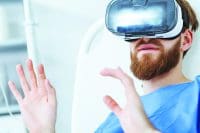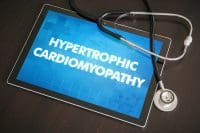Patient-centered, interprofessional care supports self-management.
- Several innovations—insulin, glucometers, insulin pens—have helped to improve diabetes care and management
- Many of the current technologies are out of reach for some patients.
- Patient-centered, interprofessional care can help support patients in their self-management efforts and connect them with the technology best suited to meet their needs.
In the United States, the incidence of diabetes continues to rise. In 2021, the Centers for Disease Control and Prevention (CDC) reported that 38.4 million people in the United States had diabetes and named it the eighth leading cause of death. (See Diabetes facts & figures.)
Facts & figures
In 2021, according to a report by the Centers for Disease Control and Prevention (CDC), diabetes was the eighth leading cause of death in the United States, with a crude rate of 31.1 per 100,000.
- In 2022, the estimated total cost of diabetes care was $413 billion.
- From 2012 to 2022, direct costs (medical costs) increased by 26% and indirect costs (loss of productivity at home and work, chronic disability, and premature death) increased by 16%.
Diabetes affects many people from various racial and ethnic backgrounds. The CDC reported the following incidence rates per 1,000 (from 2019 to 2021):
- Black non-Hispanic: 6.8
- Hispanic: 6.1
- White non-Hispanic: 5.1
- Asian non-Hispanic: 3.8
Due to the increasing number of people diagnosed with diabetes and pre-diabetes, by 2030 cost of care will increase.
Over the years, several innovations (insulin, glucometers, insulin pens) have helped to improve diabetes care and management. However, many of these technologies remain out of reach for some patients. Taking a patient-centered and interprofessional approach can help diverse populations gain access to diabetes technology.
A study by Milo and Connelly suggests that knowledge and self-efficacy play a role in predicting a patients’ HbA1C, but nurses must consider other factors. For example, ElSayed and colleagues recommend considering individual patient health literacy and cultural disease awareness when discussing diabetes technology. Nurses must assess a patient’s baseline knowledge about the technology and how it improves their care. According to the American Diabetes Association (ADA), establishing a patient’s understanding and willingness to use technology before starting diabetes therapy can help ensure patient success and satisfaction.
What is digital diabetes?
Digital diabetes combines medicine, research, technology, and artificial intelligence (AI) to help transform care. Several advances—including big data, electronic health records, and digital technologies—allow researchers and engineers to use AI as an analysis tool. Research also focuses on using technology to enhance personalized care and prevent complications. Increased access to smart devices, the internet, and social media plays an essential role in changing diabetes care. (See Machine learning and data mining.)
Machine learning and data mining
Woldaregay and colleagues explored data science, including machine learning, a hybrid system, and an artificial pancreas focused on blood glucose prediction to improve diabetes technology. Machine learning and data mining have become popular, with their expanding application in diabetes research and glucose level prediction services. Data mining extracts data from large sets of information. Classified as descriptive and predictive, it’s used in developing machine learning algorithm techniques. Data mining expanded its application in diabetes research and artificial intelligence to model personalized patient profiles. Some current artificial pancreas innovations include personalized decision support systems, blood glucose alarms, and profile modeling.
Current technologies
The ADA Professional Practice Committee recommends that individualized devices meet patient needs. Patient and family willingness and ability to use diabetes technology helps improve adherence and prevent frustration. According to Ju and colleagues, despite advances in insulin pumps, underserved populations don’t use them. Their study suggested that racial and ethnic disparities aren’t a barrier (study participants had similar insurance coverage, educational level, and history of pump use). Rather, their frustration with the pump delivery system itself presented the main barrier.
The ADA recommends using technology early in treatment to prevent long-term complications and improve patient quality of life. The International Society for Pediatric and Adolescent Diabetes (ISPAD) recommends insulin pump use in the pediatric population. The group urges many patient populations (those prone to ketosis or recurrent severe hypoglycemia, patients at risk for microvascular and macrovascular complications, young children and infants, those who experience episodes of dawn phenomenon, pregnant adolescents, competitive athletes, and children with needle phobia) to use an insulin pump with a continuous glucose monitor (CGM).
Continuous glucose monitors
Several types of CGMs exist. Professional CGMs, designed for short-term use (1 to 2 weeks), aim to improve patient understanding of their glycemic patterns. These devices can aid insulin-dosing adjustments and serve as an educational tool. Long-term use personal CGMs include real-time glucose monitoring or intermittent scanning (isCGM) capability. Some personal CGMs can be integrated with insulin pumps to create a closed-loop (hybrid) system.
Although studies demonstrate that CGMs assist in achieving target HbA1C and patient adherence, not all patients with diabetes have a CGM. A study by Rotondi and colleagues, using the Markov cost-effective model to take a population-focused approach to diabetes management, demonstrated that universal adoption of CGMs or isCGMs predicts decreased complications and mortality associated with diabetes and offers a cost-effective method for monitoring blood glucose. The study findings support universal access and equity in technology adoption of CGM and isCGM among capable adult patients.
Artificial pancreas
The two artificial pancreas device system categories are insulin-only and bi-hormonal control. The insulin-only system primarily functions based on CGM values and set thresholds. It automatically delivers basal insulin; patients manually administer mealtime insulin using the same device. The hybrid version automatically regulates basal insulin and dispenses mealtime insulin without user input. The bi-hormonal control system has hybrid features and uses two algorithms to reach a target glucose level. It’s programmed to respond to the algorithms and regulate insulin delivery in response to the patient’s HbA1c levels. Compared to the hybrid insulin-only system, the bi-hormonal control system imitates a healthy pancreas.
Automated insulin delivery
Some automated insulin delivery (AID) systems have a mode that corrects basal insulin every 5 minutes based on the patient’s CGM readings. The system helps keep HbA1c levels within the target range and reduces episodes of hypoglycemia and hyperglycemia. The manual mode with predicted low-glucose suspension preemptively addresses lows and rebound highs by automatically suspending insulin before patients reach the programmed hypoglycemia threshold. It restarts delivery when the patient recovers.
The devices, inserted just below the skin, measure glucose levels in the interstitial fluid. Tubeless and wireless systems eliminate tube kinking, which can disrupt insulin delivery. Some AID systems are waterproof. ISPAD guideline contraindications to pump therapy include a history of significant allergic reactions to the pump, tubes, and sensor; difficulty with sensor wear; and a preference not to use technology.
Before development of AID systems, patients with diabetes and their families demanded better technology for diabetes management. Some created a do-it-yourself artificial pancreas (DIYAPS) by connecting their CGM to their insulin pump. The Food and Drug Administration (FDA) doesn’t approve DIYAPS for patient use. However, according to a study by Patel and colleagues, some patients still use them because of limited access to commercial hybrid systems. The researchers compared the safety, efficacy, and patient-reported outcomes of Freestyle Libre and subcutaneous insulin infusion with DIYAPS. The study found that both groups had improved HbA1C, but participants who used DIYAPS achieved their target HbA1C as a result of their familiarity with the technology. Both groups had improved hypoglycemia awareness.
In 2023, the FDA approved the Tidepool Loop application for patients age 6 years and older. It’s the first FDA-approved application that works with DIYAPS. The fully interoperable application includes insulin dosing, glucose monitoring, and insulin delivery.
Insulin pens
Smart pens record insulin amount, dose, and timing, and they display the last dose and amount onboard. Smart device applications allow patients to calculate and track their insulin dosage. These apps also make dosing recommendations and automatically transmit data to the cloud for sharing with healthcare professionals.
Many users of insulin pens struggle to keep track of dosing, timing, and shelf-life. In 2017, the FDA approved the first Bluetooth-enabled insulin pen, Medtronic’s InPen™; in 2020, the FDA cleared it for all ages.
Supporting diabetes technology
ADA recommends individualizing the type and selection of technology and then providing appropriate training and support to help ensure patient success. Initial training should occur face-to-face with remote follow-up instruction. In addition, patients should have continued access to the technology manufacturer’s 24-hour support (usually found on the device itself or at the manufacturer’s website).
In the inpatient setting, nurses can call manufacturers directly to help troubleshoot a patient’s device. School nurses should receive technology training to ensure they can support students who use these devices.
Several smart device apps can help with diabetes management and patient independence. The mySugr app connects with Accu-Chek and Eversense glucose meters to prevent errors when patients manually log their blood glucose. It also connects with other apps such as Google Fit® and Apple Health® tracker to collect fitness data.
The One Drop app includes health coaching and a personalized content library, and the Dario app serves as a personal chronic condition management application for weight, diabetes, and hypertension self-care. It offers personalized education content for blood pressure and glycemic control, weight management, nutrition, and activity levels. The application works with the patient’s care plan. Patients can share health data collected via any of these applications with their healthcare providers and caregivers.
Nursing implications
Individualized diabetes technology therapy requires understanding a patient’s culture and preferences. When Milo and colleagues explored patient activation and self-management in a sample of Filipino Americans, they noted the role of cultural beliefs and family members in facilitating diabetes self-management. The study findings support the ADA’s clinical recommendations of a holistic approach when caring for patients using diabetes technology.
A study by Milo and Connelly addressed the gaps in knowledge regarding predictors of glycemic control and specific characteristics of patients with type 2 diabetes. Their evaluation of the relationships among diabetes self-management activities, perceived self-efficacy, and disease knowledge provided valuable information to support patient-centered care when implementing diabetes technology.
Patient and family education
Patient education related to diabetes technology focuses on disease self-management, glucose monitoring, and treatments (pharmacologic and nonpharmacological). Nurses and other interprofessional team members can provide education in person or via remote training, social media tools, software, smart applications, and websites. Diabetes technology education complements self-management by emphasizing patient empowerment, self-care, and improved quality of life.
Education provided by interprofessional team members (physicians, nonphysician providers, nurses, diabetes educators, care coordinators, nutritionists, and technology liaisons) delivered in the patient’s preferred language plays a significant role in successful outcomes. The findings of a study by King and colleagues support the use of the interprofessional model in primary care to improve HbA1c management. A follow-up at 6 and 18 months demonstrated sustained improvement in glucose levels.
Although King and colleagues conducted their study in a primary care setting, the results support the use of the interprofessional team model for diabetes technology therapy in other settings. For example, a study by Gregory and colleagues revealed that diabetes education before discharge can reduce inpatient readmission. The transition care program included an interprofessional team approach to medication reconciliation, assessment of patient knowledge and skills in using diabetes technology, and timely follow-up phone calls and office visits with the outpatient provider within 7 days of hospital discharge. Empowering the team and transparently allocating each member demonstrated better HbA1c outcomes.
A team-based approach has challenges, including staff time and compensation, productivity, and patient adherence. Leadership can address these challenges with increased staff education and support to prevent stress and burnout. This approach to diabetes innovations has applications in other chronic conditions, such as cardiovascular disease, cancer, chronic pain, dementia, vascular ulcers, and kidney disease.
DSMES
Diabetes self-management education and support (DSMES) is the gold standard for diabetes patient education. It’s evolved from use in traditional practice settings (hospitals, primary care, pharmacies, medical homes, skilled nursing facilities, and home health) to include faith-based organizations, telehealth, community centers, and worksites. The CDC’s DSMES toolkit (cdc.gov/diabetes/dsmes-toolkit/staffing-delivery/dsmes-settings.html) provides patient education and technology resources.
DSMES provided via telehealth serves as a valuable tool for patients and providers; its use during the peak of the COVID-19 pandemic made this clear. Telehealth technology has proven effective in reaching more patients from underserved populations. Similar to any diabetes technology, the first step involves assessing patient knowledge, skills, and willingness to use telehealth. However, telehealth serves its purpose only for patients with access to the internet or a smart device.
Health coaches play an important role in diabetes management. Idris and colleagues studied the use of both clinical and nonclinical health coaches over 5 years. The coaches received training on diabetes knowledge and management, cultural competencies, data collection tools, and patient enrollment and retention. Coaching sessions included behavioral modifications, use of diabetes technology, and troubleshooting based on DSMES. The study demonstrated that patient engagement with diabetes management and technology use can improve patient outcomes.
Prioritize access
Diabetes technology promotes positive behavioral transformations and patient independence. Success requires patient comfort with the technology and patient-centered goals in each phase of treatment. However, diabetes technology won’t be a good fit for all patients, especially those with limited knowledge of technology, no access to the internet or smart devices, and those with contraindications (for example, allergies to devices, sensors, or tubes). Some patients simply prefer not to use technology. A patient-centered interprofessional team approach can help guide patients to appropriate technologies and ensure their education and management needs are met.
Although technology has proven effective in managing diabetes, some insurance may not cover its cost. This poses a challenge for patients with limited financial resources. Healthcare must develop programs that leverage access to diabetes technologies for patients in marginalized populations and lobby for policies that prioritize improving access to all patients and expanding the use of these technologies to improve disease outcomes.
Razel Bacuetes Milo is an associate professor at the University of San Diego in San Diego, California.
American Nurse Journal. 2024; 19(5). Doi: 10.51256/ANJ052419
References
Centers for Disease Control and Prevention. DSMES settings. July 23, 2023. cdc.gov/diabetes/dsmes-toolkit/staffing-delivery/dsmes-settings.html
Centers for Disease Control and Prevention. National diabetes statistics report. November 29, 2023. cdc.gov/diabetes/data/statistics-report/index.html.
Dovc K, Battelino T. Evolution of diabetes technology. Endocrinol Metab Clin North Am. 2020;49(1):1-18. doi:10.1016/j.ecl.2019.10.009
ElSayed NA, Aleppo G, Aroda VR, et al. 1. Improving care and promoting health in populations: Standards of care in diabetes—2023. Diabetes Care. 2023;46(Supplement_1):S10-8. doi:10.2337/dc23-s001
Fagherazzi G, Ravaud P. Digital diabetes: Perspectives for diabetes prevention, management and research. Diabetes Metab. 2019;45(4):322-9. doi:10.1016/j.diabet.2018.08.012
Hirsch IB. Introduction: history of glucose monitoring. In: Role of Continuous Glucose Monitoring in Diabetes Treatment. Arlington, VA: American Diabetes Association; 2018. ncbi.nlm.nih.gov/books/NBK538968/
Gregory NS, Seley JJ, Dargar SK, Galla N, Gerber LM, Lee JI. Strategies to prevent readmission in high-risk patients with diabetes: The importance of an interdisciplinary approach. Curr Diab Rep. 2018;18(8):45. doi:10.1007/s11892-018-1027-z
Idris MY, Alema-Mensah E, Olorundare E, et al. Exploring the discursive emphasis on patients and coaches who participated in technology-assisted diabetes self-management education: Clinical implementation study of Health360x. J Med Internet Res. 2022;24(3):e23535. doi:10.2196/23535
Ju Z, Piarulli A, Bielick L, Marschall S, Brouillard E, Steenkamp D. Advanced diabetes technology remains underutilized in underserved populations: Early hybrid closed-loop system experience at an academic safety net hospital. Diabetes Technol Ther. 2022;24(2):143-7. doi:10.1089/dia.2021.0334
Karamanou M, Protogerou A, Tsoucalas G, Androutsos G, Poulakou-Rebelakou E. Milestones in the history of diabetes mellitus: The main contributors. World J Diabetes. 2016;7(1):1-7. doi: 10.4239/wjd.v7.i1.1
King DE, Petrone AB, Alcantara FM, et al. Outcomes in an interdisciplinary diabetes clinic in rural primary care. South Med J. 2019;112(4):205-9. doi:10.14423/SMJ.0000000000000960
Larson RJ, Philbrick AM, Carlin CS, Harris IM. Evaluating the Clinical Effect of Personal Continuous Glucose Monitoring in a Diverse Population With Type 2 Diabetes. J Pharm Technol. 2023;39(5):231-6. doi:10.1177/87551225231194027
Marks BE, Meighan S, Zehra A, et al. Real-world glycemic outcomes with early Omnipod 5 use in youth with type 1 diabetes. Diabetes Technol Ther. 2023;25(11):782-9. doi:10.1089/dia.2023.0337
Messer LH, Berget C, Forlenza GP. A Clinical guide to advanced diabetes devices and closed-loop systems using the CARES paradigm. Diabetes Technol Ther. 2019;21(8):462-9. doi:10.1089/dia.2019.0105
Miller-Rosales C, Rodriguez HP. Interdisciplinary primary care team expertise and diabetes care management. J Am Board Fam Med. 2021;34(1):151-61. doi:10.3122/jabfm.2021.01.200187
Milo RB, Connelly CD. Predictors of glycemic management among patients with type 2 diabetes. J Clin Nurs. 2019;28(9-10):1737-44. doi:10.1111/jocn.14779
Milo RB, Ramira A, Calero P, Georges JM, Pérez A, Connelly CD. Patient activation and glycemic control among Filipino Americans. Health Equity. 2021;5(1):151-9. doi:10.1089/heq.2020.0075
Moreira TR, Negreiros FD da S, Aquino M de JN de, Silva LMS da, Moreira TMM, Torres RAM. Digital technology and its effects on knowledge improvement for diabetes management: An integrative review. Int J Nurs Pract. 2023;29(1):e13029. doi:10.1111/ijn.13029
Patel R, Crabtree TSJ, Taylor N, et al. Safety and effectiveness of do-it-yourself artificial pancreas system compared with continuous subcutaneous insulin infusions in combination with Free Style Libre in people with type 1 diabetes. Diabet Med. 2022;39(5):e14793. doi:10.1111/dme.14793
Piersanti A, Giurato F, Göbl C, Burattini L, Tura A, Morettini M. Software packages and tools for the analysis of continuous glucose monitoring data. Diabetes Technol Ther. 2023;25(1):69-85. doi:10.1089/dia.2022.0237
Ramli R, Reddy M, Oliver N. Artificial pancreas: Current progress and future outlook in the treatment of type 1 diabetes. Drugs. 2019;79(10):1089-1101. doi:10.1007/s40265-019-01149-2
Rotondi MA, Wong O, Riddell M, Perkins B. Population-level impact and cost-effectiveness of continuous glucose monitoring and intermittently scanned continuous glucose monitoring technologies for adults with type 1 diabetes in Canada: A Modeling study. Diabetes Care. 2022;45(9):2012-9. doi:10.2337/dc21-2341
Sherr JL, Schoelwer M, Dos Santos TJ, et al. ISPAD Clinical Practice Consensus Guidelines 2022: Diabetes technologies: Insulin delivery. Pediatr Diabetes. 2022;23(8):1406-31. doi:10.1111/pedi.13421
van Veldhuisen CL, Latenstein AEJ, Blauw H, et al. Bihormonal artificial pancreas with closed-loop glucose control vs current diabetes care after total pancreatectomy: A randomized clinical trial. JAMA Surg. 2022;157(10):950-7. doi:10.1001/jamasurg.2022.3702
American Diabetes Association. What is a smart insulin pen?. diabetes.org/about-diabetes/devices-technology/smart-insulin-pen
Woldaregay AZ, Årsand E, Walderhaug S, et al. Data-driven modeling and prediction of blood glucose dynamics: Machine learning applications in type 1 diabetes. Artif Intell Med. 2019;98:109-34. doi:10.1016/j.ar
Key words: diabetes, digital diabetes, diabetes technology, continuous glucose monitors, artificial pancreas, automated insulin delivery, insulin pens


















